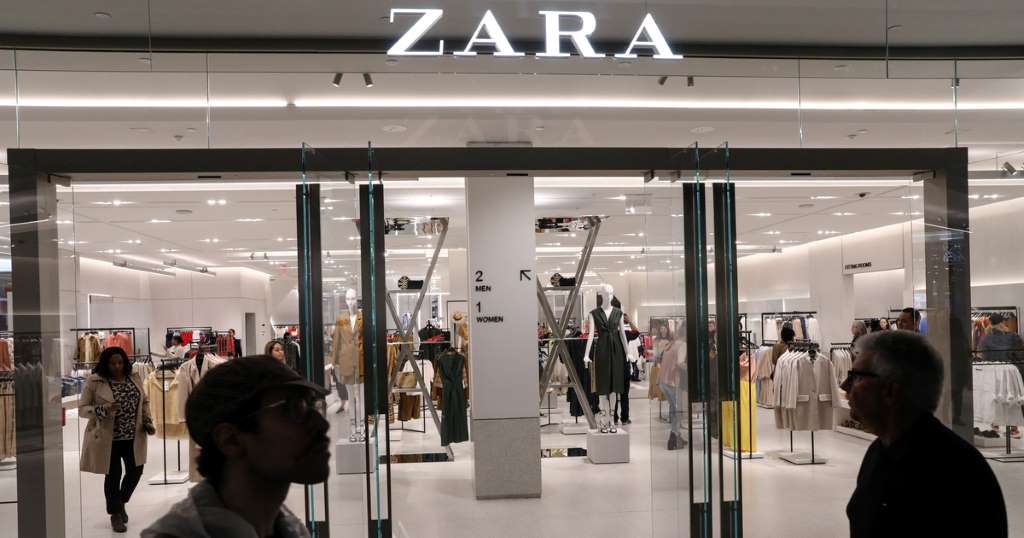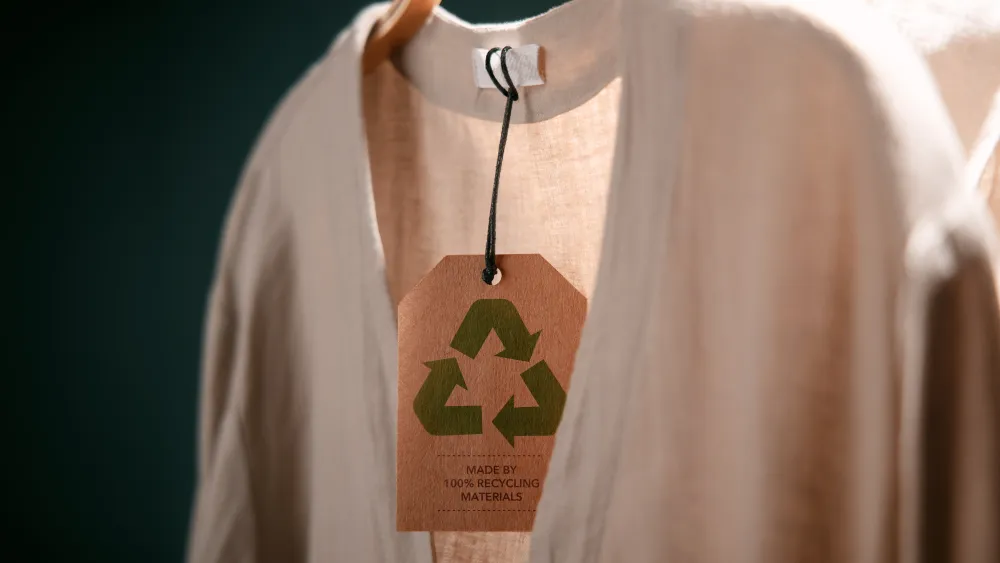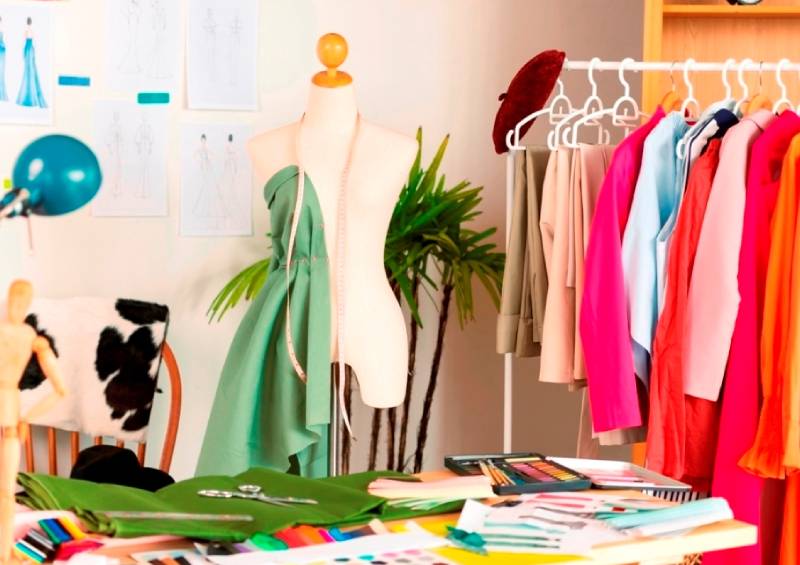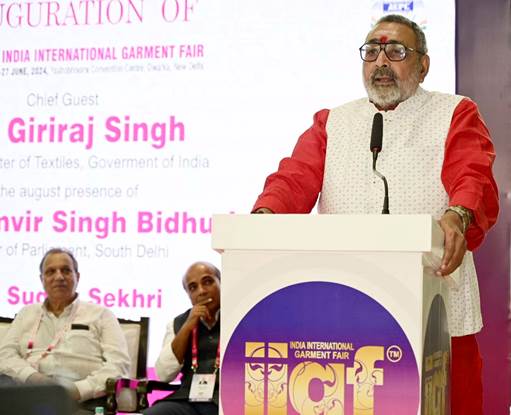FW
Embarking on a transformative journey, RSWM is expanding the capacity of its knitting unit besides embarking on other gradual capacity expansions. Having ventured the circular knitting fabrics market with an investment of Rs 80 crore, RSWM offers a range of innovative and high-quality knitted fabrics such as Single Jersey, Interlock, Rib, and Fleece at its new venture, LNJ Knits.
RSWM aims to capitalise on the $206 billion global knits market with its 4,800 mmtpa Banswara Plant in Rajasthan. It also aims to acquire an additional capacity of 4,300 mtpa.
The company has improved its denim division significantly and aims to further enhance the capacity of its division. RSWM also plans to foray into the garments segment and modernise equipment across all units. It has earmarked an investment of Rs 410 crore for these expansions.
In FY24, RSWM achieved net sales of Rs 4,057 crore. The company operates 12 manufacturing plants in Rajasthan, equipped with 6.25 lakh spindles, 172 looms, and 95 circular and flat knitting machines, ensuring high-quality textile production and timely global delivery. RSWM's annual production includes 1,21,000 mt of greige yarn, 24,000 mt of melange yarn, 32,000 mt of dyed yarn, 32 million meters of denim fabric, over 9,000 mt of knits fabric, and 43,000 mt of green fiber. The company employs over 10,000 skilled workers across its facilities.
The 99th edition of renowned trade show specialising in children’s and junior clothing, accessories lifestyle and networking, Pitti Bimbo attracted over 1,000 buyers, with 48 per cent coming from abroad, representing more than 50 countries.
Held at Florence's Fortezza da Basso from June 19-21, 2024, the show also attracted over 160 Italian and international exhibitors, more than 1,000 global distribution operators. It provided several new networking opportunities for buyers, media, professional trainers, trend promotions and individual proposals, notes Agostino Poletto, Director, Pitti Immagine.
The event also registered foreign buyers from the UK, USA, China, and Spain, along with high-level buyers from the Emirates, Saudi Arabia, and Kuwait.
The show reflects the sectoral transformations in the Italian and European markets that are currently witnessing a decline in domestic consumption and independent multi-brands stores.
They are instead witnessing an emergence of new retail chains, adds Poletto. To continue supporting high-quality and innovation production in the industry, the show needs to continue evolving, he emphasies..
Scheduled for January 2025, Pitti Bimbo's 100th edition will introduce these evolutionary changes with an aim to reaffirm the show's pivotal role in the industry.
Marking its 50th anniversary, global textile manufacturer and designer of commercial, hospitality, and residential fabrics, Camira, has increased the percentage of textile-to-textile waste in its popular recycled polyester fabric, X2.
Originally launched in 2012, X2 now contains 25 per cent textile-to-textile recycled polyester, along with 75 per cent post-consumer recycled polyester from plastic bottles.
With less than 1 per cent of textiles worldwide being recycled into new products, and a staggering amount of clothing sent to landfill every seven minutes, Camira’s efforts are timely and impactful. By using discarded textiles from the apparel industry, as well as yarn and fabric from its own waste streams, Camira has pioneered the latest iteration of X2 to make an even bigger impact, reducing its carbon footprint and showcasing the infinite opportunities of textile waste as a valuable resource.
Lynn Kingdon, Head-Creative, Camira, states, X2 is Camira’s first 100 per cent recycled textile to include closed-loop post-industrial content from its own textile yarn remnants and selvedges. Comprising 33 dynamic colorways with 14 new shades, X2 is designed for hybrid spaces, including commercial, hospitality, and residential interiors. Suitable for seating, panels, curtains, and drapery, the fabric provides excellent stretch, flammability, and abrasion performance.
X2’s new color palette embraces warm berry tones, cool blues, mauves, and turquoises, as well as subtle earthy shades, providing a color scheme for every interior. Comprising textile-to-textile waste, the black base yarn in X2 creates a textured grey mélange effect, reminiscent of high-end wool, adding surface appeal and dimension.
Textile Minister Giriraj Singh unveiled the government's plan to expand the Rs 10,000 crore Production Linked Incentive (PLI) scheme to include the garment sector. This announcement was made at the currently in-progress India International Garment Fair (IIGF). The move will help boost domestic textile manufacturing and exports, he added.
Highlighting the industry’s potential to increase textile exports. Singh urged it to target shipments worth $50 billion in the coming years. Emphasising on adoption of the 'hub and spoke' model to strengthen domestic manufacturing, he encouraged the industry to collaborate, and establish new Indian brands. He also announced plans to revive the Scheme for Integrated Textile Parks (SITP) to create internationally standardised parks. All these initiatives will help revamp textile parks in the country, and promote green textiles, thus bolstering the industry’s growth and sustainability.
Introducing the new initiative launched by the Cotton Corporation of India (CCI) to enhance transparency in cotton traceability in India, Lalit Kumar Gupta, Managing Director, announced that henceforth each cotton bale will include a QR code providing detailed information about the fiber. The announcement was made at the third meeting of the Committee on Cotton Production and Consumption (COCPC) for the Cotton Season 2023-24, held in Mumbai.
The QR code will offer traceability for each bale, including the village of procurement, the factory where it was processed, and the date of sale, explained Gupta. This initiative will boost transparency and build trust within the cotton supply chain, he added.
Chaired by Roop Rashi, Textile Commissioner, the meeting was attended by representatives from the central and state governments, the textile industry, cotton trade, and the ginning and pressing sector. It dwelled on the various aspects of the cotton scenario, such as state-wise area, production, import, export, and consumption.
In a post-meeting press conference, Rashi assured that the industry would have sufficient raw material availability. She highlighted the rise in cotton consumption that marked the second highest consumption in the last decade.
According to COCPC, total cotton supply for the current 2023-24 season, ending September 30, is estimated at 398.38 lakh bales of 170 kg each. This includes an opening stock of 61.16 lakh bales, production of 325.22 lakh bales, and imports of 12 lakh bales. In comparison, the previous season's total supply was 390.68 lakh bales, with an opening stock of 39.48 lakh bales, production of 336.60 lakh bales, and imports of 14.60 lakh bales.
The closing balance for the current season is expected to decline to 47.38 lakh bales from 61.16 lakh bales last season. Total demand is projected to increase to 351 lakh bales this season from 329.52 lakh bales last year. Notably, exports are anticipated to rise from 15.89 lakh bales to 28 lakh bales this season.
Nike is expected to report its slowest revenue growth in two years in its soon-to-be announced fourth-quarter results. Nike's revenue is expected to increase by only 0.2 per cent Y-o-Y to $12.85 billion during the quarter, according to LSEG data. Analysts on average expect Nike's adjusted earnings to grow by 26.4 per cent to 83 cents per share from a year earlier.
The brand attributes this slowdown to a lack of innovation and increased competition from emerging brands like Deckers' Hoka and Roger Federer-backed On.
Despite the challenges, Nike is banking on the upcoming Olympic Games in Paris to regain some market share. The company plans to spotlight performance products like the Alphafly 3 racer and the Pegasus running shoe during the event.
Nike's recent focus on its direct-to-customer business, moving away from wholesale, has not yielded the desired results, worsening its demand issues. In March, company executives announced plans to double down on wholesale partnerships to boost sales.
As of May 25, On's market share in the footwear category at retailer Dick's Sporting Goods had risen to 12 per cent from 8 per cent in January, while Hoka's market share increased to 13 per cent from 8 per cent, according to YipitData. Meanwhile, Nike's market share at Dick's Sporting Goods fell to 32 per cent in May from 39 per cent in January.
The rising popularity of these upstart brands, especially in the running category, has also prompted Nike to implement a $2 billion cost-saving plan over three years. This plan includes scaling back on key sneaker lines such as the Air Force 1 shoes.

Robert Antoshak, a consultant for the global apparel industry presents a mixed outlook for the US apparel market, acknowledging recent improvements while highlighting ongoing concerns. In a United States Fashion Industry Association (USFIA) webinar featuring him, Antoshak highlights signs of recovery while acknowledging ongoing challenges.
Recovery signs
Antoshak outlines several tell tale signs of recovery.
Imports on the rise: After a pandemic-induced slowdown, apparel imports are climbing again, with China regaining its position as the top supplier. This suggests a renewed demand for clothing in the US.
Inventory levels stabilize: Retailers are successfully managing their stock, with nagging inventory gluts subsiding. This is further underscored by a healthy inventory-to-sales ratio, which has returned to pre-pandemic levels.
Consumer spending up: Apparel sales have grown, with the inventory-to-sales ratio returning to pre-pandemic levels.
Lingering issues
However, despite the positivity there are several lingering issues. One major one is shifting consumer preferences. The data reveals a curious trend in product categories while sales are up the product mix has changed, with a trend towards casual wear.
Several external factors can significantly impact the market's trajectory. These include inflationary pressures. Overall inflation is a concern, though apparel price increases have been modest so far. Consumer sentiment and confidence has dipped slightly after a period of optimism. Disposable income growth has slowed in recent months. Also, the US population is skewing older and heavier, potentially affecting clothing needs.
Market forecast
Uncertainty reigns: Antoshak presented a range of forecasts, acknowledging the difficulty of predicting the market's trajectory due to numerous external factors.
Government policy: Trade agreements, tax regulations, and environmental standards are all areas of potential concern.
Geopolitical tensions: The ongoing situation in Ukraine and tensions between the US and China could disrupt supply chains and raise costs.
Technological advancements: Advancements in areas like artificial intelligence and online retail could significantly impact the industry.
Competition heats up: The market is becoming increasingly competitive, with new business models like hyper-fast fashion emerging.
Shipping challenges: Rising fuel costs, geopolitical instability, and stricter customs enforcement could complicate global apparel trade.
The bottom line is recovery is on the horizon, but patience is required. The US apparel market shows signs of progress, with sales rising and inventories under control. However, a full recovery hinges on navigating various challenges. Antoshak concludes with a cautiously optimistic outlook, stressing that the market's future health depends on multiple evolving factors.
British e-commerce firm THG plans to sell its portfolio of luxury goods websites to Mike Ashley's Frasers Group.
The portfolio being sold includes Coggles, an international fashion retailer known for its designer collections. Despite facing challenges in the luxury market, THG’s luxury division managed to generate approximately £43 million ($54.39 million) in sales last year, operating around the break-even point.
Known for its sportswear and apparel retail, Mike Ashley’s Frasers Group has been expanding its luxury segment, which includes brands such as Flannels. The acquisition of THG’s luxury portfolio is expected to bolster this expansion.
This strategic move marks a significant step for both companies, as THG shifts its focus and Frasers Group enhances its luxury brand offerings.
As part of the transaction, THG and Frasers have also agreed to a partnership spanning several areas. This includes collaboration with THG Ingenuity, THG’s proprietary online platform that supports third-party brands, and Myprotein, THG’s leading online sports nutrition brand.
Mumbai is set to host the 15th edition of HGH India, the bi-annual trade show for home textiles, decor, furniture, houseware, and gifts, from July 2 to July 5 at the Bombay Exhibition Center. This event, pivotal for the home improvement sector, bridges Indian and global brands with the domestic market, offering comprehensive sourcing solutions for retailers, distributors, architects, and interior designers.
This year's HGH India will unveil 2,500 innovative products across 50,000 sq. meters, featuring 700 brands from 32 countries, including newcomers from Germany, Hong Kong, Malaysia, Russia, and Ukraine. India itself contributes 120 new exhibitors, presenting a range of furnishing fabrics, bed and bath items, decorative accessories, home furniture, handicrafts, and cookware.
The event garners substantial support from the Ministry of Textiles, Government of India, and various export councils. The Development Commissioner Handicrafts has facilitated the participation of artisans through agencies like the Export Promotion Council for Handicrafts (EPCH) and the North East Handicrafts & Handloom Development Corporation (NEHHDC). These artisans will display unique crafts in cane, bamboo, wood, eri silk, and tassar silk. The Development Commissioner Handloom, in collaboration with the Handloom Export Promotion Council and National Design Centre, has organized group participation focusing on hand-woven textiles.
HGH India continues its collaboration with the Indian Institute of Interior Designers (IIID), Mumbai Chapter, to enhance the event's benefits for architects and interior designers. This partnership provides these professionals with direct connections to manufacturers and brands, facilitating integrated home design solutions.
The prestigious H-Circle Awards, which recognize innovation in home products, will return for their third edition. Additionally, the "Culture Codes: Identity & Curiosity" trend for Autumn/Winter 2024-25 will be showcased, emphasizing a blend of Indian traditions with modern technology and global influences.
HGH India remains committed to promoting India's rich cultural heritage through its "Indian Heritage" brand. This initiative, supported by various government agencies, connects retailers and designers with skilled artisans, ensuring the preservation of traditional crafts. The Indian Heritage pavilion will feature live demonstrations by master craftsmen, creating exquisite hand-crafted products in pottery, wood and metal craft, handloom embroidery, and more.
With its diverse range of exhibitors, robust government support, and focus on innovation and tradition, HGH India 2024 promises to be an unparalleled event in the home improvement sector, offering valuable opportunities for networking, sourcing, and discovering the latest trends.

Zara, the fast-fashion giant, is making waves with its foray into live shopping. After experiencing a 50 per cent increase in product size sales in China thanks to their livestreams, Zara is setting its sights on Western markets. This trend, wildly popular in China, is being cautiously adopted by the brand.
From Douyin to your doorstep
Zara's live shopping journey began in November 2023 on Douyin, the Chinese sister app of TikTok. Their concept: weekly, five-hour long shows featuring models showcasing the latest collections. But Zara's approach is different. Instead of the fast-paced, product-pushing style common in China, Zara's streams are more akin to fashion presentations. Think catwalks, dressing room glimpses, and even ‘behind-the-scenes’ peeks at the crew, this curated experience now resonates with Chinese consumers, with their first livestream garnering a whopping 1.2 million views.
Westward bound, a calculated expansion
Buoyed by the Chinese success story, Zara is taking its live shopping concept global. The brand plans to launch similar shows on its app and website in the US, UK, and Europe by October 2024. This measured rollout reflects the different e-commerce landscapes. While livestream shopping is booming in China, Western markets haven't fully embraced it, according to PYMNTS.com. Zara seems to be aware of this. Unlike the fast-paced Chinese model, Zara's streams are reported to be more curated and aesthetically pleasing. However, Zara's success in China suggests there's potential. The ability to see clothes modelled in a variety of settings and ask questions in real-time could be a game-changer, particularly for younger, tech-savvy demographics.
Too early to gauge its success
While the Chinese results are promising, predicting Western reception is difficult. Experts like Andrew Lipschultz of HulkApps warn that established online shopping habits and cultural differences might pose a challenge. However, Zara's brand recognition and focus on a curated experience could give them an edge. Ultimately, the success of Zara's live shopping experiment will depend on their ability to adapt the concept to Western preferences and create a truly engaging and interactive experience for viewers.










